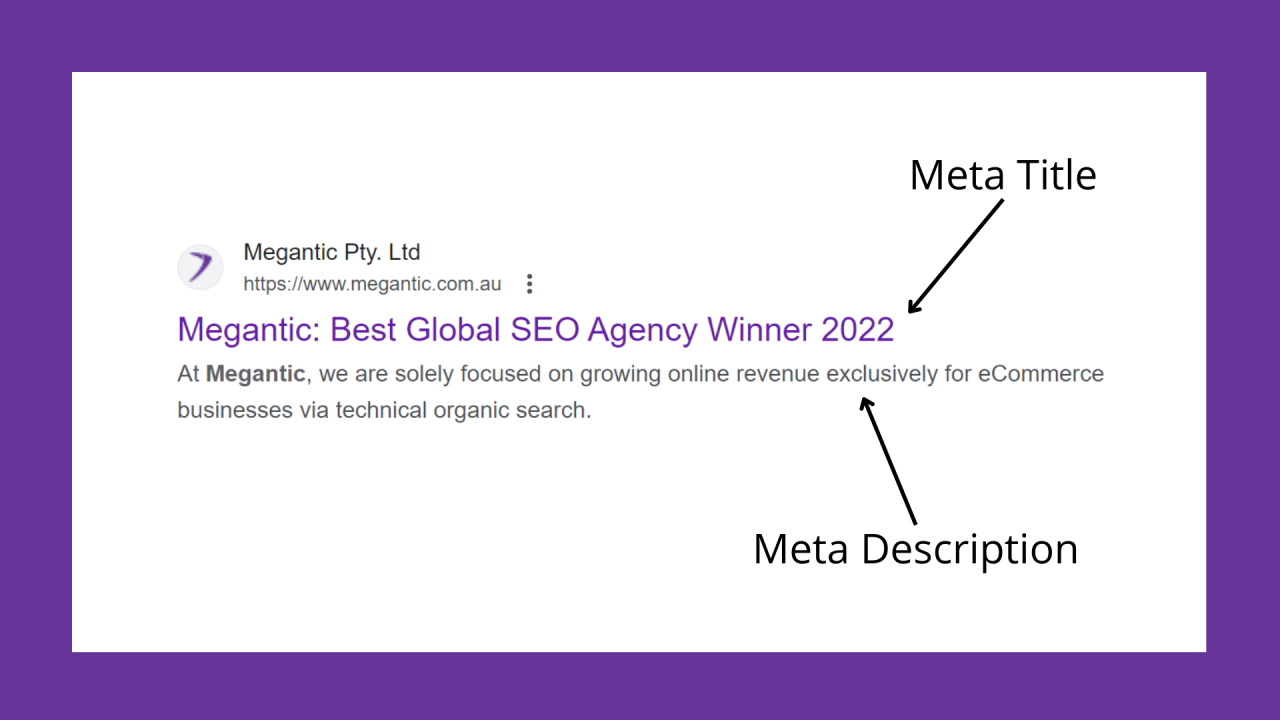
What Are Meta Tags and How Do I Utilise Them on an eCommerce Website? A Guide for 2023
Meta – isn’t that what Facebook rebranded to? What has it got to do with MY website? In SEO land, the word meta has been important since Search Engines began. Specifically, meta titles and descriptions – collectively known as meta tags.
Meta tags are snippets of HTML code that provide information about a webpage to search engines and other web crawlers. They are placed in the header section of a webpage and provide a concise summary of the content of that page. They are in the code and can’t be seen on the front-end of a website but appear in the search engine results pages (SERPs).
Meta tags are an important aspect of SEO and can impact a webpage’s visibility and ranking on search engine results pages (SERPs).

I like to use the analogy that the www is like a huge library and each website is like a book being cataloged, and Google is the catalog. The meta titles and descriptions explain what each page in the book is about. If someone did a search, having metas setup correctly helps the algorithm find that page and see that it’s relevant to the query. It would then pull it up in the catalog for the user.
In eCommerce, meta tags are especially important as they can help to attract potential customers by increasing the click through rate (CTR). Here are some best practices for creating effective meta tags for an eCommerce website:
Keep It Concise
Search engines typically display only a limited amount of information from your meta tags in the search results, so it’s important to keep your title and description tags short and to the point. Aim for 60 characters or less for your title tag and 155 characters or less for your description tag.
Use Relevant Keywords
Use keywords that are relevant to your product or service to help search engines understand what your webpage is about. Include the most important keywords in your title tag, description tag, and other meta tags. We recommend using the broadest/ most high traffic phrase that is targeted to your page and maybe one other.
Be Descriptive
Your meta tags should accurately describe the content of your webpage. Use descriptive language to clearly communicate what your product or service is about and why it is relevant to potential customers. Include any point of difference that your product might have to try and entice a potential buyer to click through. For example, ‘largest range’, ‘made in Australia’ or ‘custom made.’
Avoid Duplicate Content
Avoid using the same meta tags on multiple pages of your website. Each page should have unique meta tags that accurately reflect the content of that page. Using formulas to create metas is something that we discourage for this reason.
Include a Call To Action
We recommend including a call to action (CTA) where possible to entice traffic and increase CTRs. Some examples are ‘free shipping’, ‘Afterpay available’ or even just ‘buy now’.
By following these best practices for eCommerce meta tags, you can improve your website’s visibility and attract more potential customers to your catalogues and products. Remember to regularly review and update your meta tags to ensure they accurately reflect the content of your website and any changes to your products or services.
This article has been written by Kristina Trood, one of our Technical Project Managers.